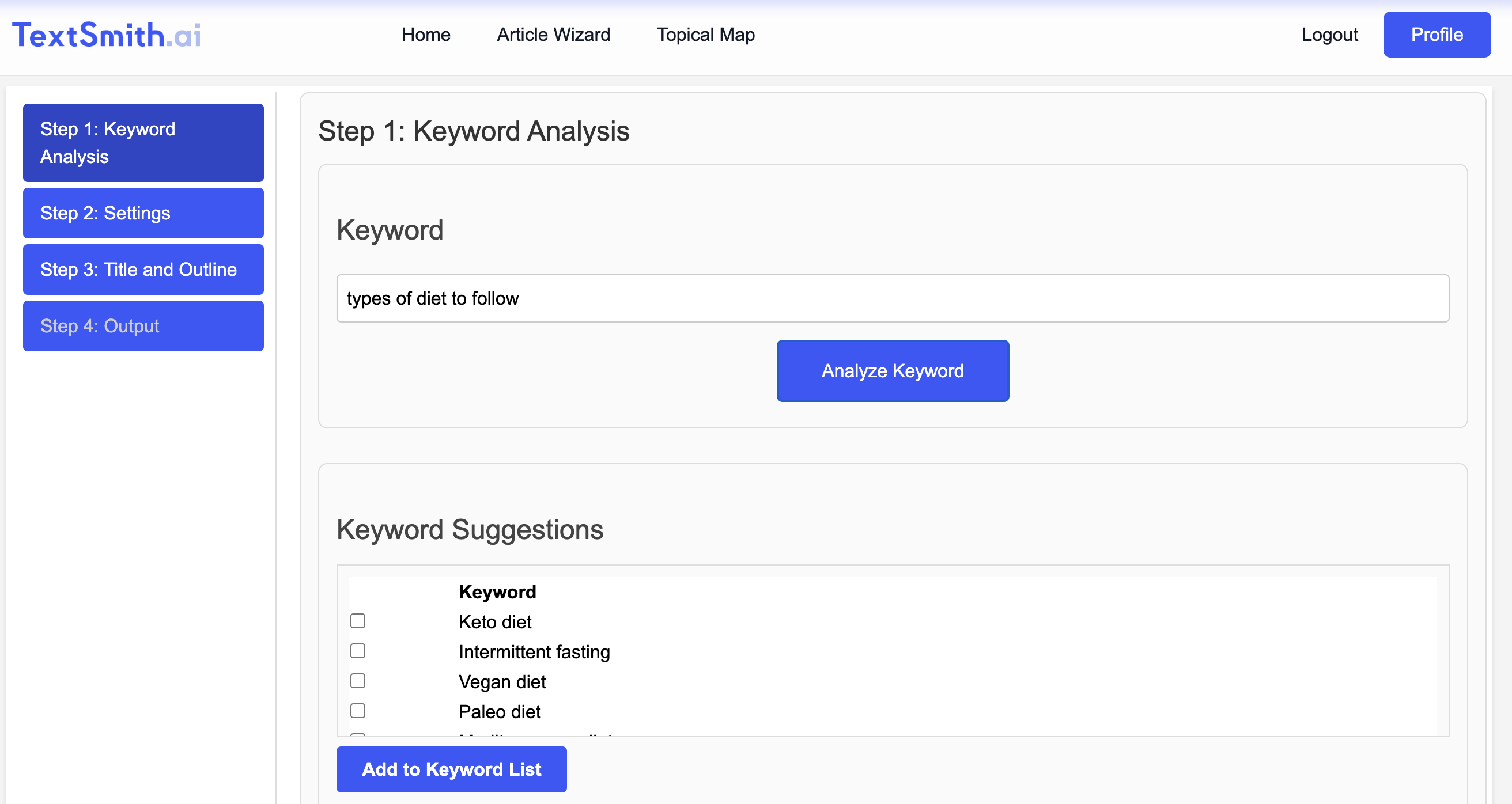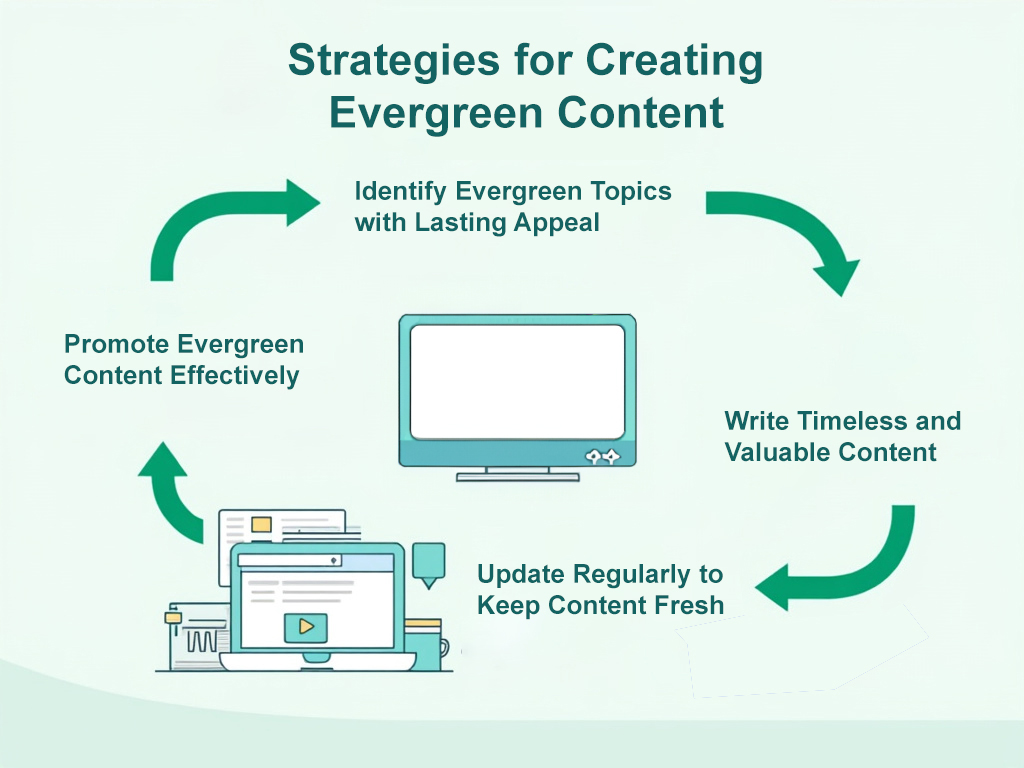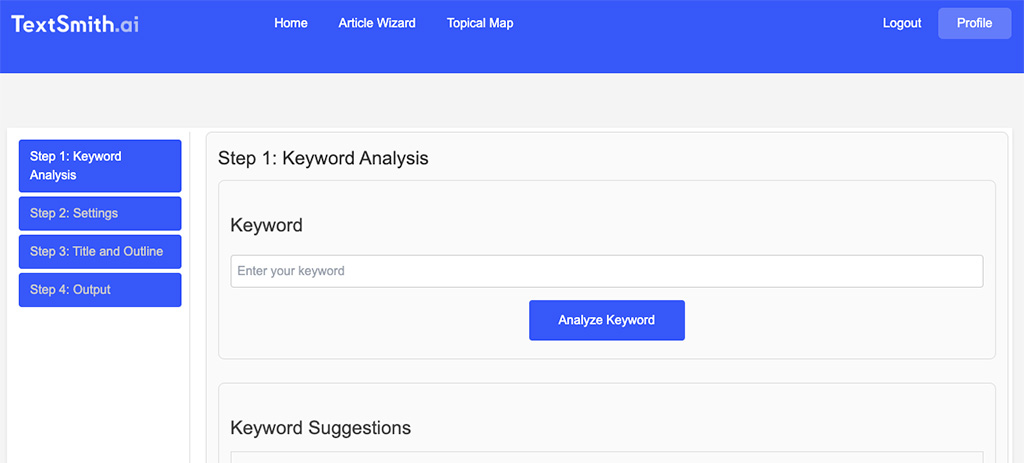Strategies to Keep Your Content Relevant Over Time
5 minute read
Unlike trend-driven or news-based articles that lose relevance quickly, evergreen content continues to attract traffic, engage readers, and deliver value long after it's published. But how can you create content that stands the test of time? Here, we’ll explore actionable strategies to help you craft evergreen content that stays relevant and valuable over the years.
What is Evergreen Content?
Evergreen content refers to material that maintains its relevance and value over time, regardless of when it's published. This type of content addresses timeless topics or provides foundational knowledge that doesn't change rapidly. Examples include "How-to" guides, in-depth tutorials, and resource lists. The key is to focus on subjects that readers will continue to search for months or even years from now.

Why Evergreen Content Matters for SEO
Evergreen content plays a vital role in driving long-term organic traffic and maintaining a strong search engine presence. Unlike topical or news-based content that can experience sharp spikes and drops in traffic, evergreen articles provide consistent engagement. They also offer several SEO advantages:
- Steady Traffic Growth: Evergreen content continuously attracts search queries, building up a steady stream of visitors over time.
- Higher Authority: Content that remains relevant signals to search engines that your website is an authoritative source on a given topic.
- Improved Link-Building Opportunities: Well-crafted evergreen pieces are more likely to be linked to by other websites, further enhancing your SEO rankings.
Strategies for Creating Evergreen Content
1. Identify Evergreen Topics with Lasting Appeal
Choosing the right topic is the first step to creating evergreen content. Focus on subjects that solve common, long-standing problems or answer frequently asked questions within your niche. Use tools like Google Trends, keyword research tools, and your own Topical Map to identify these subjects.
- Look for keywords with consistent search volume over time.
- Avoid overly trendy or time-sensitive topics.
- Analyze competitors' evergreen content to find inspiration and identify content gaps.

2. Write Timeless and Valuable Content
To ensure your content remains relevant, avoid references to specific dates, events, or rapidly changing trends. Instead, focus on universal principles, enduring advice, and comprehensive information.
- Use clear, concise language that appeals to a broad audience.
- Write in a way that feels fresh and valuable even years after publication.
- Regularly audit your content to ensure that any time-sensitive information is updated.
3. Structure Your Content for Readability and SEO
The way your content is structured can significantly impact its longevity. Use clear headings, subheadings, bullet points, and numbered lists to enhance readability. This structure not only improves user experience but also helps search engines understand your content better.
| Content Element | Purpose | Example |
|---|---|---|
| Headings (H2, H3) | Provide context, improve SEO | "How to Choose the Right Digital Marketing Strategy" |
| Bullet Points | Enhance readability, list items | "Key Benefits of Evergreen Content: Consistency, Authority" |
| Internal Links | Improve navigation, boost SEO | Link to related articles, such as "SEO Content Pitfalls" |
| External Links | Build credibility, enhance authority | Link to reputable sources or studies |
4. Update Regularly to Keep Content Fresh
While evergreen content is designed to be long-lasting, it still requires occasional updates to maintain its relevance. Set a schedule for content reviews and make necessary adjustments, such as updating statistics, adding new insights, or removing outdated information.
- Review your content every 6-12 months to check for accuracy.
- Monitor analytics to identify pieces that may need refreshing.
- Use tools like Google Search Console to find outdated content that could benefit from updates.
5. Promote Evergreen Content Effectively
Just because evergreen content has long-term value doesn't mean it should be left to fend for itself. Regular promotion is crucial to keeping it visible and engaging new audiences.
- Share evergreen content on social media platforms periodically.
- Use email marketing to feature evergreen articles in newsletters.
- Create internal links to evergreen content from newer articles.

Examples of Successful Evergreen Content
Here are some examples of content that has remained relevant and continues to drive traffic:
- "The Ultimate Guide to SEO Basics" — Covers timeless SEO strategies that help beginners and experts alike.
- "How to Write Effective Blog Posts" — Provides universal tips on content creation and engagement.
- "Top 10 Healthy Eating Habits" — Focuses on foundational wellness advice that is always in demand.
Conclusion: Making Evergreen Content Work for You
Creating evergreen content is both an art and a science. It involves selecting the right topics, writing in a timeless style, and regularly updating and promoting your work. By following these strategies, you can ensure that your content remains valuable, drives consistent traffic, and establishes your site as an authority in your niche. Start by identifying topics that have long-term relevance, use tools like your Topical Map to plan effectively, and keep your content fresh with periodic updates.
Evergreen content isn't just about writing once and forgetting—it’s a long-term investment in your brand's visibility and authority. Start implementing these tips today and watch your traffic grow steadily over time!

